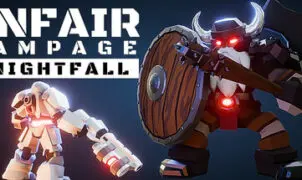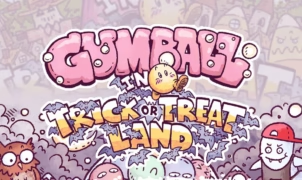It is not uncommon for fans to describe the gameplay in the Metal Gear Solid series to be movie-like. Back in 1998, Hideo’s Kojima’s Metal Gear Solid graced the PSOne. Using the 3D environments to his advantage, Kojima delivered a gameplay experience unlike any other. In 2004, the Shadow Moses incident was recreated using updated technology on the Nintendo GameCube. Now, for the third time, Solid Snake’s Alaskan terrorist hunt has been retold in a new way.
[p]
Metal Gear Digital Graphic Novel uses the art from the comic book, and places them all on a single UMD disc. It is not quite a movie, but is more than a comic book because it has characteristics of a video game. This digital graphic novel contains animations and page transitions like a movie, includes drawings of a comic book, but strings everything together through user interaction. The disc uses the visual experience of a comic book portrayed through movie-like narration.
[p]
The main mode of this graphic novel is the Simulation mode. Here, players view the events of the Shadow Moses incident through hundreds of pages. The player has the option of just letting the disc run through the story, as if watching a movie. But hardcore fans will want to slow the action down and take in every detail as possible. If the Square button is tapped, the page will stop, and the player can zoom in on the action. Hidden within most pages are “memories elements,” bits and pieces of detailed background information regarding the events of this Alaskan nuclear disposal facility. In order to find these memory elements, the player moves a cursor with the analog nub, taking notice of the cursor’s spinning reticules. The faster they spin, the closer you are to finding one of these memory elements.
[p]
This Where’s Waldo style of gameplay can become quite tedious, even for fans of the series. Clicking and scanning each page can quickly become boring and bring the anticipation of the story to a screeching halt. Also, there are times when the analog nub is a little too sensitive, especially when zooming in to 300%. While taking the time to scan each page will benefit the player in the long run, constantly stopping the story could kill the mood of the action packed story line. Think of it as pressing the stop button every two minutes while watching Star Wars Episode III. Yeah. Get the picture?
[p]
By finding all these memories, the player can then piece them all together in Memory Building Simulation mode. Here, the player literally links together icons laid out in a 3D space. However, linking long chains requires perfection as some memories can only be linked in a very specific way. For example, say you want to link to chain D. But the only way to get there is to link chains A to B, then B to E, then E to D. Unfortunately, linking pieces can be quite difficult, especially if you are missing one of those elements. The player can literally spend hours upon hours finding the right combination of memories to reach the end and extend to every path. Even the most hardcore Metal Gear fans will probably find this to be very tedious work, especially since the camera system and the linking controls are not the most responsive in the world. Rotating the camera in the 3D tube-like environment often has an obstructive view by either items in the foreground or the background. The presentation is cool, but the control scheme could have used a little bit of work.
[p]
Ashley Wood’s art in Metal Gear Digital Graphic Novel has two sides. There are some images that are built with a quick scribbly sketch theme while others are more photorealistic. One panel might display one type of art while the next will look entirely different. The scribbly effect helps enhance the use of motion by giving the idea that a static image is given movement while the more realistic drawings help extenuate one major scene. Either way you look at it, the art work fits not only the Metal Gear world, but also the interaction of this digital graphic novel.
[p]
Some scenes even go as far taking the 2D art, and forming a 3D model. The camera then bends and slightly twists around the image to give the effect of a slight fish-eye view. If you read the comic books, seeing these images in this new way really gives the presentation a new dimension of depth.
[p]
Adding animation to a comic book that had none is not the only enhancement in this UMD disc. Sound effects and music also play an important role in keeping the player interested. Footsteps let the player know that someone is walking even when the image is static. Familiar hymns, like the Mantis theme, help convey the proper sense of emotion. Hearing the music and sound effects is one thing, but actually seeing them is another. Reading the sounds a weapon makes for example (seeing the budha budha text) flow from a firing machine gun gives the comic book feel but with a movie-like touch. The experience is quite gratifying.
[p]
Even if you played through the original Playstation version and the GameCube remake dozens of times, you will find new details in this comic. The first scene opens with soldiers sneaking through the forests of Alaska, stealthily making their way to Solid Snake’s house, something that was never fully portrayed in either game. There is even a detailed scene where Master Miller helps Snake sneak around the disposal facility, something that was specifically written for the comic. There are many small instances where the story was slightly rewritten to fit on comic pages, but it is for the best interest for the reader. For example, Snake does not have to travel back to the Blast Furnace to change the shape of the key card; he does it all right in the room with the computer. This keeps the action fresh and stays current without useless backtracking.
[p]
Metal Gear Solid Digital Graphic Novel is a tough game to review because it really isn’t a game. In fact, if you had to compare it to something, it might fair better against a UMD movie disc. Either way, this disc a great new way to experience the events that really made Solid Snake popular. Hardcore fans will love all the extra details that they can find in this small UMD disc. However, the memory building mode is not for everyone. Therefore, it would not be a surprise if this disc only sees the inside of your PSP once or twice. Just like a movie, you can only watch it so many times before it gets to be a little old. But the lower price tag of $19.99 is perfect price point for this disc. And I wouldn’t be surprised if this new type of interactive media makes some headway into the main stream market very soon.
President & CEO














Leave a Reply